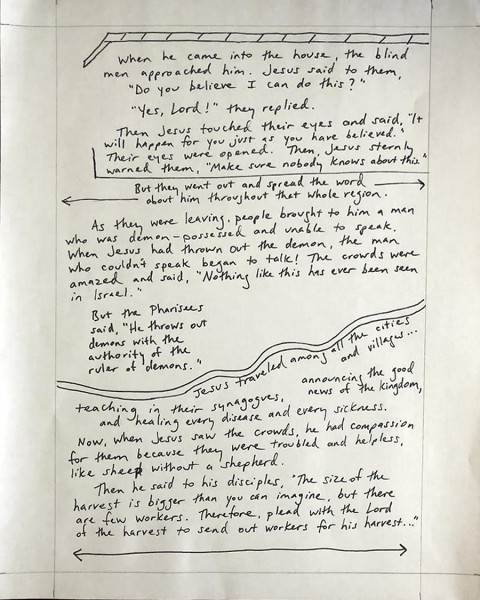I was a scribe for the Chicago Illuminated Scripture Project
What would possess me to copy a chapter of the Bible by hand?

Long before books could be printed on a mechanical press or a digital printer and delivered to your door at the click of a button, they were written and copied by hand, word by word, with hand-cut pens in homemade ink on the fussy surfaces of animal skins. The books of the Bible were handed down as scrolls and codices, hand-copied by Hebrew scribes and early Christians. Copyists and illuminators turned scripture into works of art, gilded, colored, and illustrated, often with covers set in gold and gems.
The creation of many hands and thousands of hours of painstaking labor, a codex of the Bible was something the average Christian would never see or touch, much less read. Only churches, monasteries, and wealthy aristocrats could afford them. Today the Bible is available to anyone with an internet connection, searchable and in the translation and font size of your choice. We can buy illuminated scripture verses to hang on a wall, wear on a shirt, tattoo on our skin, or eat in birthday cake frosting. Why would we take the time and energy to write out the scriptures, when they are already accessible in so many places?
Copying holy texts may no longer be a necessity, but it is a spiritual discipline that invites the scribe to deeper engagement with the word of God. It’s an old way of praying, like lectio divina, that has found new life during the pandemic.




